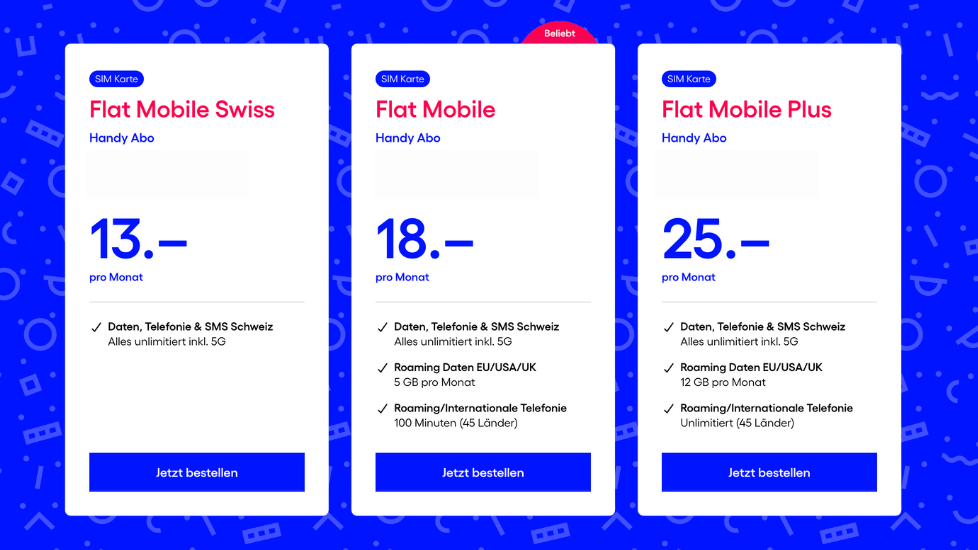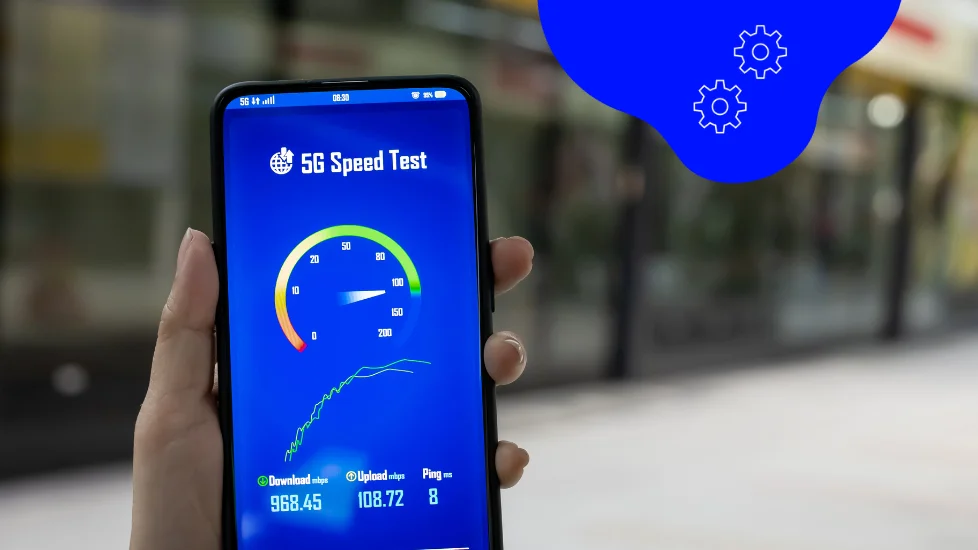Mobile internet for everyone and everything
What Internet Speed Do I Need for My IP Camera?
Security systems come in all sorts of price ranges. For many private users, however, these solutions are hardly proportionate. Most people simply want to be able to keep an eye on things or to be notified if something moves in front of the allotment garden or the terrace of their vacation home. For this purpose, many turn to an IP camera. These cameras provide real-time images via the Internet and can usually be monitored via smartphone app. This is a solution that also works via cellular networks, and if you know your own bandwidth requirements, you don’t have to dig too deep into your wallet.
Why operate an IP camera over cellular?
Most IP cameras have a WiFi module that allows them to connect to a local WiFi network. This form of connectivity is particularly suitable for home use, since the WiFi is always running anyway and the Internet speed of the home connection is also easily sufficient for transmitting the images.
Mobile communications via LTE or 5G are ideal wherever local WiFi cannot be used or the connection is to run independently of the site’s Internet and power connection.
The application possibilities are versatile and interesting for private individuals as well as for businesses. We have summarized some examples for both contexts:
Private:
- Surveillance of apartments and vacation homes Maybe you have a rustico in Ticino or are looking for a straightforward surveillance solution for your home when you travel. In both cases IP cameras offer a simple solution.
- Wildlife monitoring Whether in your own backyard or in a forest that belongs to you: If you want to know what the wildlife in your area looks like, wildlife cameras provide you with razor-sharp images, even at night. Thanks to mobile connectivity, you can place the camera anywhere.
- Nanny Cam Want to visit friends for a while and leave the little ones at home? For many parents, this step would be easier if they had a way to take a look at home in between or, if necessary, to communicate with the kids via intercom. With an IP camera like the Arlo Go 2, that’s no problem!
Business:
- Warehouse monitoring Do you operate an external material warehouse, possibly even in a remote location without internet access? Here, IP cameras with cellular connectivity can provide a simple way to keep an eye on your goods and be notified in case of movement within the warehouse.
- Mobile surveillance Especially in the construction industry, transport vehicles are often left unattended for long periods of time in undeveloped locations. Here, an IP camera in the cargo hold can help prevent material loss and solve possible thefts.
- Agriculture and animal keeping IP cameras are also becoming increasingly popular in agriculture. Be it to monitor the condition of a field or the animals in the barn or on the pasture. Especially in remote areas, cellular communication provides the necessary connectivity for these cases.

A battery-powered camera like the Arlo Go 2 with a cellular connection and SIM card is a simple and inexpensive solution in such cases.
How Fast Should the Connection Be?
At Digital Republic, you can choose between different tariffs for your IP camera, which differ in their connection speed. This can save you money, because unlike a regular SIM card, you don’t have to pay for telephony and full speed.
This assumes that you know how fast your connection should be. The range is quite large, especially for cameras. For example, if only still images are transmitted (wildlife or weather cameras), a speed of 1 Mbits is sufficient without any problems. The corresponding rate is available from Digital Republic for 6 francs per month.
However, if you want to transmit live video, things get more complicated. Here, the resolution of the video stream and the complexity of the transmitted images are the primary factors.
For example, if you transmit at FullHD, i.e. 1080p, you need a bandwidth of roughly 3 Mbits for a smooth image. If you increase the resolution to 2160p, the required bandwidth quickly jumps to 10 Mbits.
Digital Republic therefore recommends a speed of 1 Mbits for still cameras such as wildlife or weather cameras and a speed of 10 Mbits for live video cameras – i.e. Flat 1 for CHF 6 and Flat 10 for CHF 10 respectively.
What if I Don’t Always Need the Camera?
The beauty of mobile IP cameras is their versatility. Of course, connectivity has to play along with that. That’s why you can easily pause all Digital Republic plans on a monthly basis. We don’t have a cancellation period either, and you can also adjust the speed of your subscription if necessary.
If you are not yet sure whether Digital Republic has good coverage in your location, you can easily benefit from a free trial month as a new customer. Simply order a SIM card and convince yourself of our service quality without any obligation.
If you are satisfied, you can deposit a payment method in your customer portal and continue using the SIM card immediately. If you are not satisfied, you do not need to do anything. Let the month pass and simply dispose of the SIM card again.
Discover Our Other News Articles

The Development of Our Ideal Cell Phone Plans for Switzerland
The path to the current Trio Flat Mobile Swiss, Flat Mobile, and Flat Mobile Plus cell phone plans is also an example of how Digital Republic wants to function as a provider and where its priorities lie. We have quickly transformed ourselves from a pure data SIM provider to a cell phone plan provider. And we have completely rethought the development process.

The Affordable Mobile Provider With Award-Winning Service
When it comes to mobile providers in Switzerland, the wheat is often separated from the chaff when it comes to price. Either you pay little for your subscription and do without services like support or 5G, or you go to one of the big providers and pay more than you might like. At Digital Republic, you get both!

Why 5G Is Not Always Equally Fast
Sometimes fast, sometimes slow, sometimes suddenly 4G again. The network indicator on your smartphone suggests that it is connected to the internet via either 4G or 5G. In fact, a complex mechanism and a lot of communication between your smartphone and the network is taking place in the background to ensure that you always have the best possible connection.
